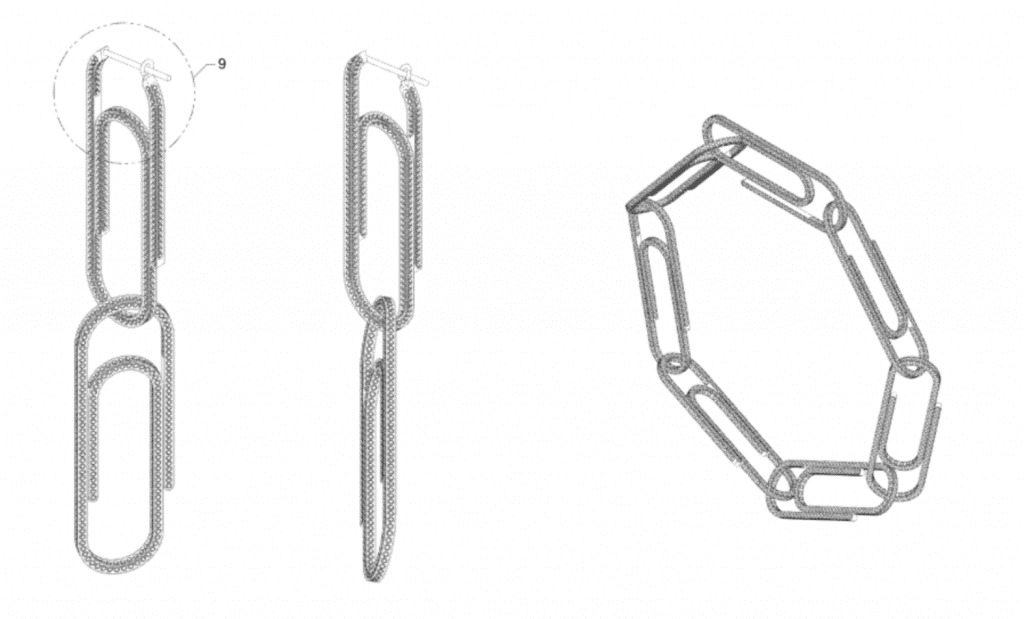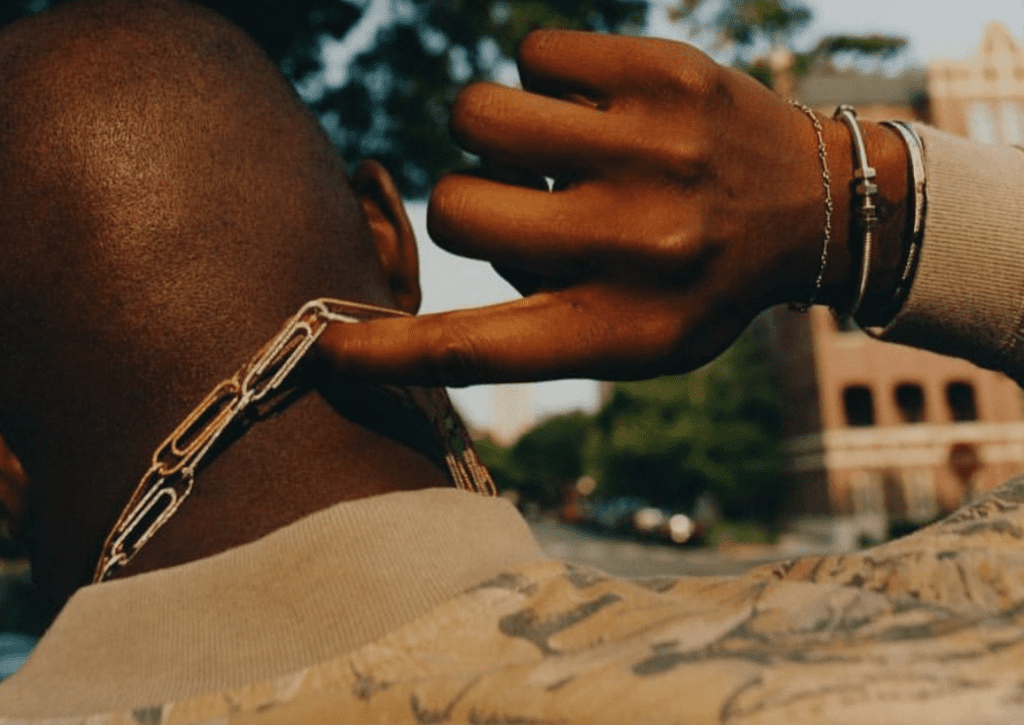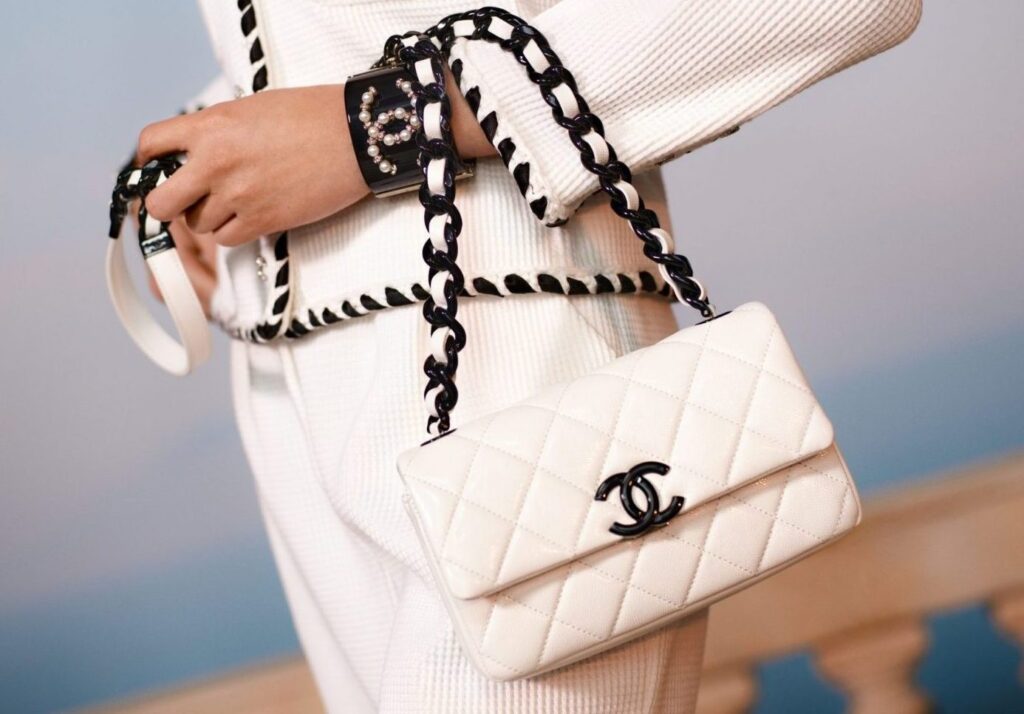As Virgil Abloh’s counsel continues to engage in a back and forth with the U.S. Patent and Trademark Office (“USPTO”) in an attempt to convince the national trademark body that the red zip ties and the quotation marks that Off-White uses on an array of its buzzy offerings act as indicators of the source of the products (i.e., function as trademarks), the brand has added two new design patents to its increasingly-robust arsenal of intellectual property rights: ones for “jewelry items.” Not just any “jewelry items,” the items at the center of the new patents are a bracelet that consists of jewel-encrusted paperclip-looking designs, and an earring that consists of two diamond-encrusted paperclips-shaped pieces.
A type of intellectual property, design patents provide protection for “visual ornamental characteristics embodied in, or applied to, an article of manufacture” – meaning “the configuration or shape of an article, the surface ornamentation applied to an article, or to the combination of configuration and surface ornamentation.”
There are two significant requirements that an invention (or design) must meet in order to be eligible for patent protection, both of which seemingly prove relevant when discussing the specific paperclip jewelry at issue: it must be novel and non-obvious. This means that the design claimed in the patent must be new, “sufficiently different from what has been used or described before that it may be said to be non-obvious to a person having ordinary skill in the area of technology related to the invention,” and must not the subject of a public disclosure or commercial use more than a year before your patent application filing date.
Given the novelty and non-obviousness standards that serve as prerequisites for patent protection, one would be forgiven for wondering just how Abloh could secure patents for jewelry designs that look like paper clips, which in theory are anything but new. The answer to that lies in the details, literally. Abloh’s newly-issued patents do not grant him exclusive rights for any and/or all bracelets and earrings made of designs that look like paperclips (and certainly not jewelry made of actual paperclips, themselves). Instead, “The patents claim designs for jewelry pieces with elements shaped like paperclips” and which are “studded with small jewels or rhinestones,” according to design patent expert and University of Oklahoma College of Law professor Sarah Burstein, who first reported on the patents.

Burstein notes that the rights afforded by the patents at play (D890,621 and D890,013) are limited by paperclip-centric designs that already exist. “You have to view [Abloh’s] designs in light of the prior art,” which means any evidence that the invention was already publicly known or available, in whole or in part, before the effective filing date of the relevant patent applications (I.e., before 2018 and 2019). With that in mind, any claims of ownership and/or infringement by Abloh “should not cover, for example, DIY paperclip bracelets, since those were made and used before [Abloh’s] patent was filed.” (As for “how you would prove that in the court or before the USPTO, however, is a different issue,” per Burstein.)
So, what exactly would Abloh be able to claim is infringing if another party makes paperclip jewelry? The test for that will ultimately consider whether the hypothetically infringing product would appear to be “substantially the same” as Abloh’s patented design from the point of view of an ordinary observer. This is distinct from the pre-Egyptian Goddess, Inc. v. Swisa, Inc. “point of novelty” test, which required examining the prior art to determine where the “point of novelty” over that prior art in the new design lay, and then determining whether the allegedly infringing design incorporated that point of novelty. In the hypothetical case at hand, a sizable part of the point of novelty would almost certainly be the encrusted jewels, which Abloh mentioned in connection with the design of the jewelry last year, saying, “The idea is like high jewelry for all. It’s a crash — it’s a paper clip, but it’s also pavé diamonds made in a very specific way.”
As for the continued adoption of commonplace elements by the Off-White brand (and Abloh, himself), that is hardly surprising; after all, the brand is famous for its takes on existing designs. Its most famous source-indicating graphic, the array of diagonal lines, looks almost exactly like the lines that appear on crosswalks. The logo that consists of two horizontal arrow – which appears on various Off-White wares and for which Abloh maintains a trademark registration for use on apparel – is a common graphic that can be found on many a packing/shipping box. And the list goes on … seemingly to the bedazzling of paper clips.














